
52 minute read
Spotlight
ADVOCATING FOR THE BETTERMENT OF HUMAN HEALTH
An Interview With Nehal Naik, MD, Resident Member, SAEM Board of Directors
Nehal Naik (@NehalSN) is a third-year resident at the George Washington University in Washington DC. An immigrant to the United States and a Californian at heart, he completed his undergraduate degree at the University of California, Berkeley and received his MD from Virginia Commonwealth University/Medical College of Virginia. Dr. Naik began his service to SAEM in 2017, serving on the inaugural board of SAEM RAMS (Resident and Medical Students) and creating a home for trainees as chair of the RAMS research committee. He continued as the RAMS president from 20192020 and currently serves as the immediate past president of RAMS. Through his leadership, Dr. Naik has led RAMS to become a preeminent organization for the advancement of the future of emergency medicine through the development of resident and medical students into academic leaders. In 2020 Nehal was elected as the resident member of the SAEM Board of Directors. He also served as the Global Emergency Medicine Academy (GEMA) Resident representative from 2019-2020 and has served on several SAEM committees, including the SAEM Virtual Presence, Program, and Membership committees. His academic interests include global emergency medicine development in prehospital systems, medical education, and innovative practice in emergency medicine.

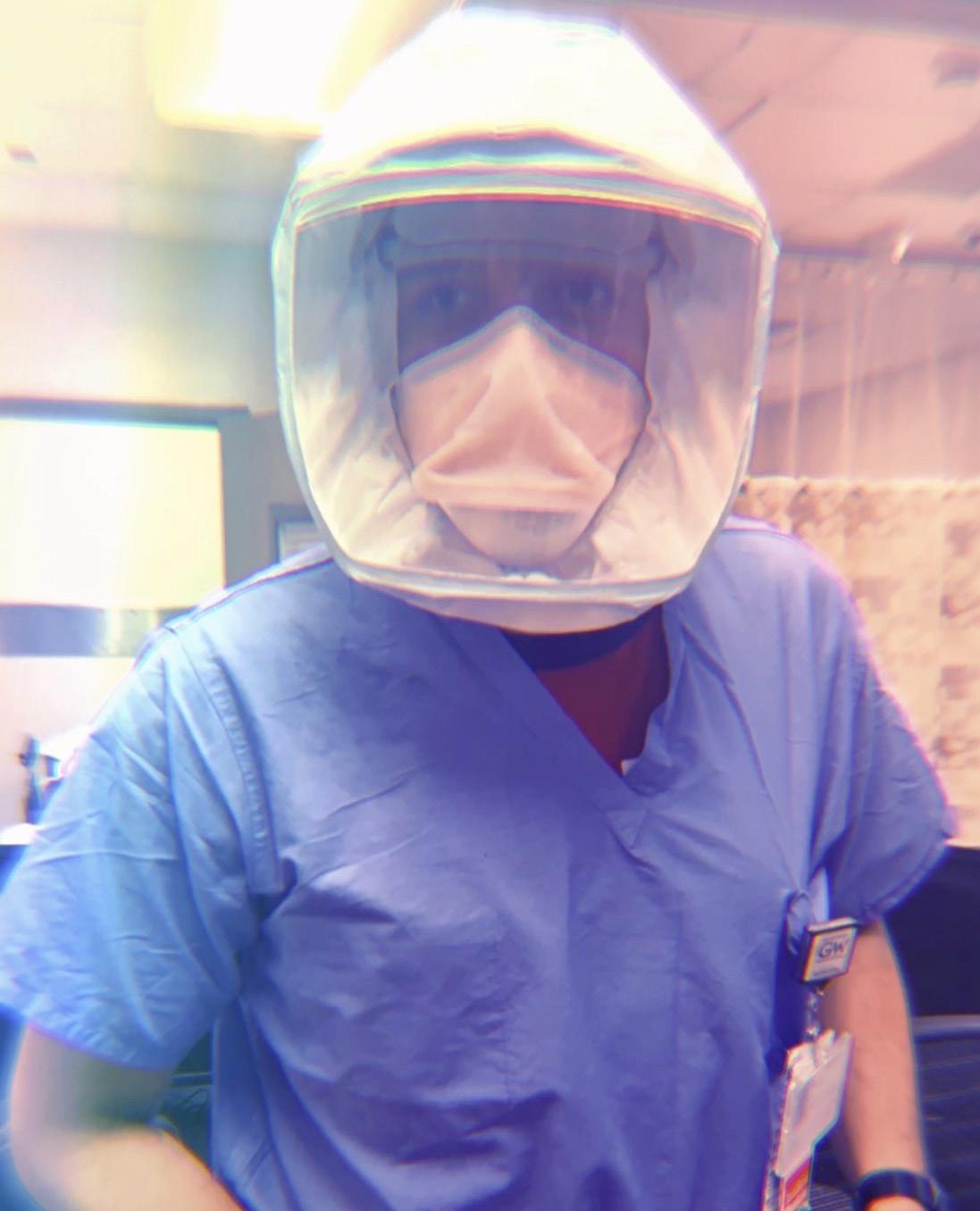
How has the COVID-19 pandemic affected you, your practice, your family, and your colleagues and coworkers? What has been your biggest challenges and greatest lessons learned during this time?
COVID-19 has reinvigorated my work as a resident physician in emergency medicine. While the work of a resident physician has always been difficult, the renewed sense of purpose has brought up my spirits. When the pandemic started, emergency physicians were some of the first to raise alarms in our region and hospital. For me, going to work each day in the emergency department (ED) feels like another opportunity to give someone a better day ahead. Outside of work, it has been tough, with increasing isolation from friends and family. Not seeing my parents from across the country has been the hardest challenge. Facetime or Zoom doesn’t make up for in-person family time. Washington, DC has been a great city to ride out this pandemic, with the nearby National Mall being my local park to play and relax in. The greatest lesson throughout this pandemic has been to constantly include goals of care discussions as a part of my care in the ED. With the many unknowns for COVID-19 patients, I’ve made it a habit to include some palliative discussions to aid in the future care for all patients.
How do you personally manage stress and maintain work/life balance, particularly during this unprecedented time of COVID? Second, what advice would you give to an individual who is struggling? And finally, what do you think our specialty as a whole can do to address COVID-related stress and improve physician well-being?
Managing stress and finding balance have definitely been tough in residency. What gives me the most joy, outside of work, is simply being outdoors. The Mid-Atlantic area with the Shenandoah National Forest and Chesapeake Bay provides opportunities for wonderful hikes

continued from Page 5
and kayaking to help clear my mind. During COVID, workout applications offering free access to healthcare workers have been great for helping me keep up with exercising while the gyms are closed. Again, Washington DC has been a great city in which to get outside and enjoy some sun.
However, wellness is not isolated to individual activities outside of work. There are many institutional and organizational strategies that impact physician wellness. The organizational factors of having a collaborative team at work, a supportive EM chair who is a champion for emergency medicine in our institution, and a program director who focuses on resident mindfulness have also been key to maintaining my wellness. Refocusing on spending more time with patients and focusing less on what's on a computer screen has been valuable to my wellness and has further developed my clinician-patient relationships.
To EM residents who are struggling with managing stress and maintaining a work-life balance, my key tip is to refocus your time while at work on patient well-being and the clinicianpatient relationship. It will give you so much joy and return you to the heart of medicine. Wellness is not solely your responsibility, however. While there are individual factors that contribute to wellness which you can control, external factors, often related to your workplace, are harder to control. Advocate within your residency for organizational factors and a learning environment that contributes to and improves wellness. If you're wondering what some of those factors are, look at the National Academy of Medicine's Action Collaborative on Clinician Well-Being and Resilience for more details
Emergency medicine is leading the way in recognizing the impact of moral injury on physicians, but there's still lots of work to do. Academic emergency medicine needs to consider some of the external factors related to clinician well-being and resilience — especially during the COVID pandemic — and work on structural changes to reduce moral injury.
Any tips on surviving, perhaps even thriving, during residency, especially during this time of COVID?
Make time for yourself, enjoy the world around you outside of the oftenwindowless emergency apartment. Even as winter approaches, there's so much outdoors for you to enjoy. Also advocate for yourself and your residents to better your well-being on an organizational and institutional level.
As the resident representative to the SAEM Board of Directors, what issues do you feel are most germane to current and future emergency medicine trainees?
Advocate, advocate, advocate! For your patients, for your profession, for yourself. As a frontline physician, you can truly advocate for your patients in all of their care. Factor in social determinants of health including but not limited to housing, nutrition, racial/gender/social equity, mental health, immigration status. This isn't just awareness on a national scale, but in your day-to-day practice as an EM physician. Give your patients the resources and tools to maximize success outside of the ED. Emergency medicine is taking the lead on FOAMed and medical education research. We need to become a dominant force within medical research for the betterment of our patients. Finally, we

need to ensure that emergency care is physician-led, and there is no substitute for a residency-trained, board-certified emergency physician.
You were on the inaugural SAEM RAMS board… How have you seen RAMS change, grow, and improve since then and how would you like to see it change, grow, and improve in the next five years?
I've seen RAMS grow from an idea into a preeminent national organization within SAEM. We've created content to guide medical students and residents into a career in academic emergency medicine and find their niche within EM. During the COVID pandemic, we've taken a lead in advising medical students through residency applications and residents through the changing academic EM job market. We've created multiple avenues for mentorship, and increased support for trainees involved in research and education.
For the future, I would like to see RAMS recognized as the leader in creating academic leaders in emergency medicine to advance the standards of patient care. I would like to see our members on the cutting edge of medical research and using the resources within RAMS/SAEM to enrich the academic community of emergency medicine. Finally, I would like to see SAEM’s annual meeting, along with its RAMS events, become the highlight of every resident's and medical student's year.
How and why did you become interested in global health? What are some of the specific issues you’ve become involved with? Why do you feel these are important?
I started working in global health while helping develop a prehospital
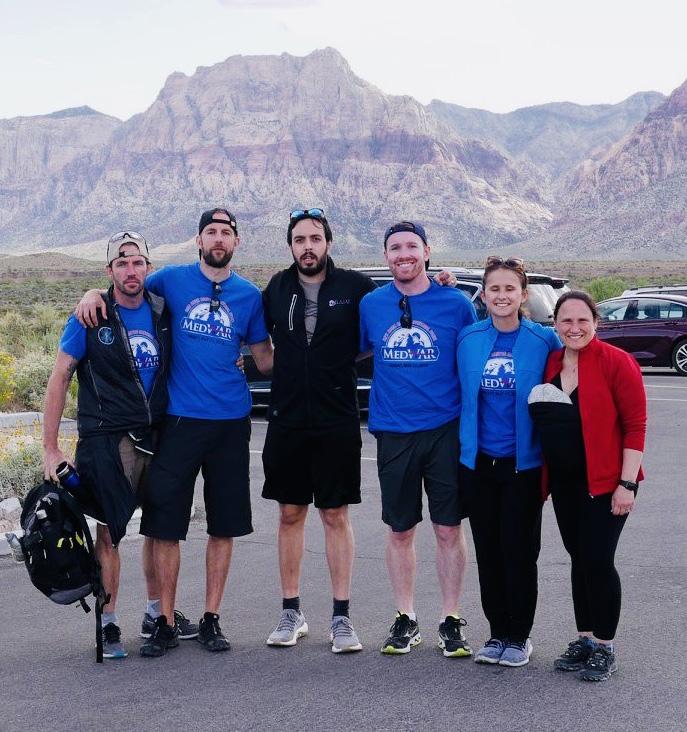
notification system for trauma patients in Ecuador. Later, as an NIH Fogarty Global Health Scholar, I worked on creating a prognostic quantitative indicator for patients being treated for TB. In emergency medicine, I've worked through George Washington University’s EM residency training programs in India by capacity building through education. What I love about global health is developing connections with physicians and healthcare workers from around the world and increasing their capacity to provide the best care possible for their patients. I also love growing together with them as they learn alongside me. Medicine is a global community that transcends borders and languages, and each of us should work on fostering that community. It’s how we growth, it’s how we research, it’s how we heal.
Who or what influenced your decision to choose the academic/EM specialty and if you were not doing what you do, what would you be doing instead?
Academic emergency medicine lets you build a better future for emergency care. The work that I do clinically, in research, and within SAEM actively advocates for the betterment of human health. I get to tackle challenges related to social determinants of health, work with the regional team that develops the disaster response to COVID-19, and help improve physician wellbeing. This is only something I can do in academic emergency medicine and I wouldn't change it for the world.
What is the most important lesson working as an EM physician has taught you so far?
The greatest joy you get as an EM physician is spending as much time as possible at the patient’s bedside. Discussing their underlying reason for an ED visit, working through their social determinants of health and goals of care are so much more valuable than anything on a computer screen.

Up Close and Personal
What one word would your friends use to describe you?
Encyclopedic
Who would play you in the film of your life?
Jeff Goldblum
What would that film be called?
BAFERD Takes a Hike
What is your guilty pleasure?
Rasmalai, an Indian Dessert
What is at the top of your bucket list?
Road trip from California to Patagonia, down the Inter-American and Pan-American highways
Who would you invite to your dream dinner party?
Jawaharlal Nehru, the first prime minister of independent India
What’s one book you’ve read (fiction or nonfiction) that has had a lasting effect on you?
God’s Hotel: A Doctor, a Hospital, and a Pilgrimage to the Heart of Medicine, by Victoria Sweet
Dismantling Implicit Bias and Microaggressions in EM by Encouraging Communication and Professionalism
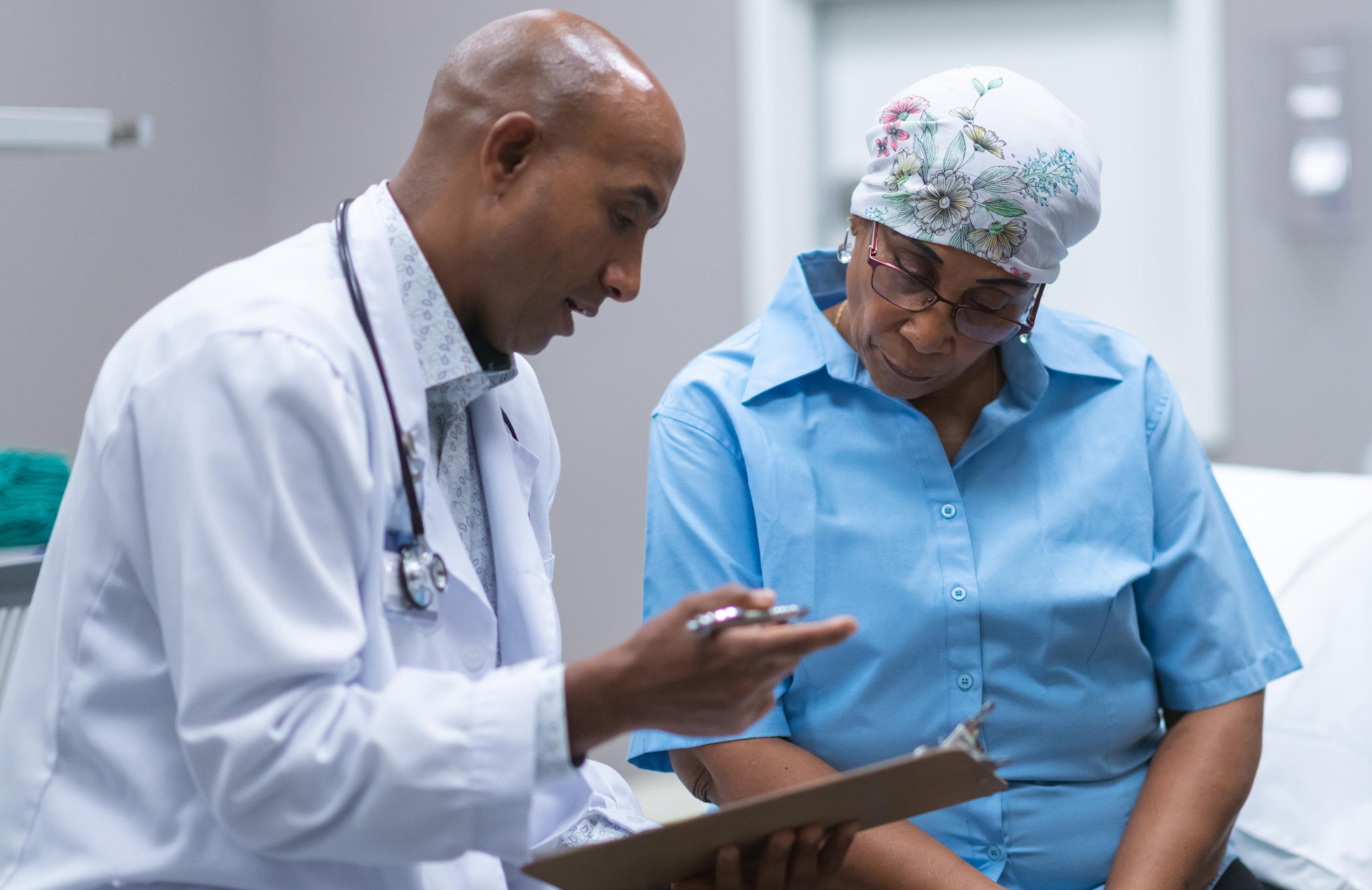
By Cherrelle Smith MD, Youyou Duanmu MD, MPH, Stefanie Sebok-Syer PhD, Avinash Patil MD, Maame Yaa Yiadom MD, MPH, MSCI, and Prasanthi Govindarajan MBBS, MAS
When presenting a new patient, the can result in inadequate patient and behaviors may be dismissed resident comments that a Latinx care due to the dismissal of patient as harmless humor. Language that patient’s chief complaint is “total complaints or engendering mistrust of discriminates against patients or body dolor.” This jargon has not been healthcare providers. Bias also creates coworkers needs to change in order to used in the resident’s report of similar a negative workplace environment end the perpetuating, damaging effects symptoms for nonminority patients. when colleagues who identify with of biased associations. As emergency physicians, it is crucial to prioritize creating an inclusive environment in which all people feel comfortable seeking and receiving equitable care; therefore, an important aspect of emergency medicine practice must include identifying and addressing implicit biases. Implicit biases are unconscious the demographic being discussed are offended, intimidated, or shamed. Further, the persistent use of language that is laced with bias exposes patients and identifying colleagues to microaggressions, which are defined as indirect, subtle, or unintentional discrimination against members of a marginalized or underrepresented group. Why is challenging bias so uncomfortable? Discussions about our biases are, for multiple reasons, can be uncomfortable. Assumptions about the intent behind statements are often perceived as originating from a place of malintent, moral failure, or deficit. Those who want to challenge bias may fear being judged negatively, labeled as overly sensitive, associations (usually negative) that The use of an ethnically specific or political. Nevertheless, missing are made towards individuals based term like total body dolor is a opportunities to confront inappropriate on their race, ethnicity, gender, sexual microaggression that erodes language and interactions when they orientation, or other identity. These professionalism within our field, yet occur encourages a culture of inequality types of biases are problematic and the ill effects of these comments
that could even be perceived as accepting of such language or behavior.
What if we created a culture of feedback to dismantle implicit bias and microaggressions?
Using feedback as a means of socially constructing desired behaviors provides an opportunity to have conversations about racism and bias; this is a gateway to culture change. Deliberate dialogue about optimal communication and professionalism within the emergency department establishes a clinical environment where we can help each other refine our language and reframe our practice. Viewing feedback as educational rather than punitive brings about awareness of an unrecognized insensitivity and creates a space where faculty, trainees, staff, and students are all accountable for maintaining an inclusive environment.
Determining how and when to address unprofessional statements and behavior can be challenging. Directly and swiftly addressing biases, derogatory statements, or microaggressions is ideal; however, this approach can make the person whose language or behavior is being called into question feel targeted or embarrassed, which may undermine one’s ability to engage in a feedback discussion. No two interactions are the same and thus when addressing these situations professional judgement is needed — ideally as close to the occurrence as possible.
Language and behaviors that make an emergency department inclusive and reduce obstructions
to quality care delivery fall within the realm of professionalism. Racism, gender insensitivities, and sexism are appropriate topics to address in the emergency department— not only for trainees, but also for faculty and staff as life-long learners.
Calling attention to microaggressions, increasing self-awareness on implicit biases, and modeling ideal communication to trainees and peers by providing direct feedback all promote professionalism and inclusivity.
The attending asks the resident if they have a minute to discuss his communication and explains that “total body dolor” conveys the message that the patient is exaggerating her symptoms and the term targets Latinx in a way that is unprofessional and displays bias even before any medical details have been shared. The attending then asks the resident: How can we communicate in a way that is more respectful and inclusive of our patient? ABOUT THE AUTHORS Dr. Smith is a clinical assistant professor of emergency medicine at Stanford University.
Dr. Duanmu is an assistant professor of emergency medicine at Stanford University and codirector of the ultrasound fellowship.
Dr. Sebok-Syer is an instructor of emergency medicine at Stanford University.
Dr. Patil is a clinical assistant professor in emergency medicine at Stanford University.
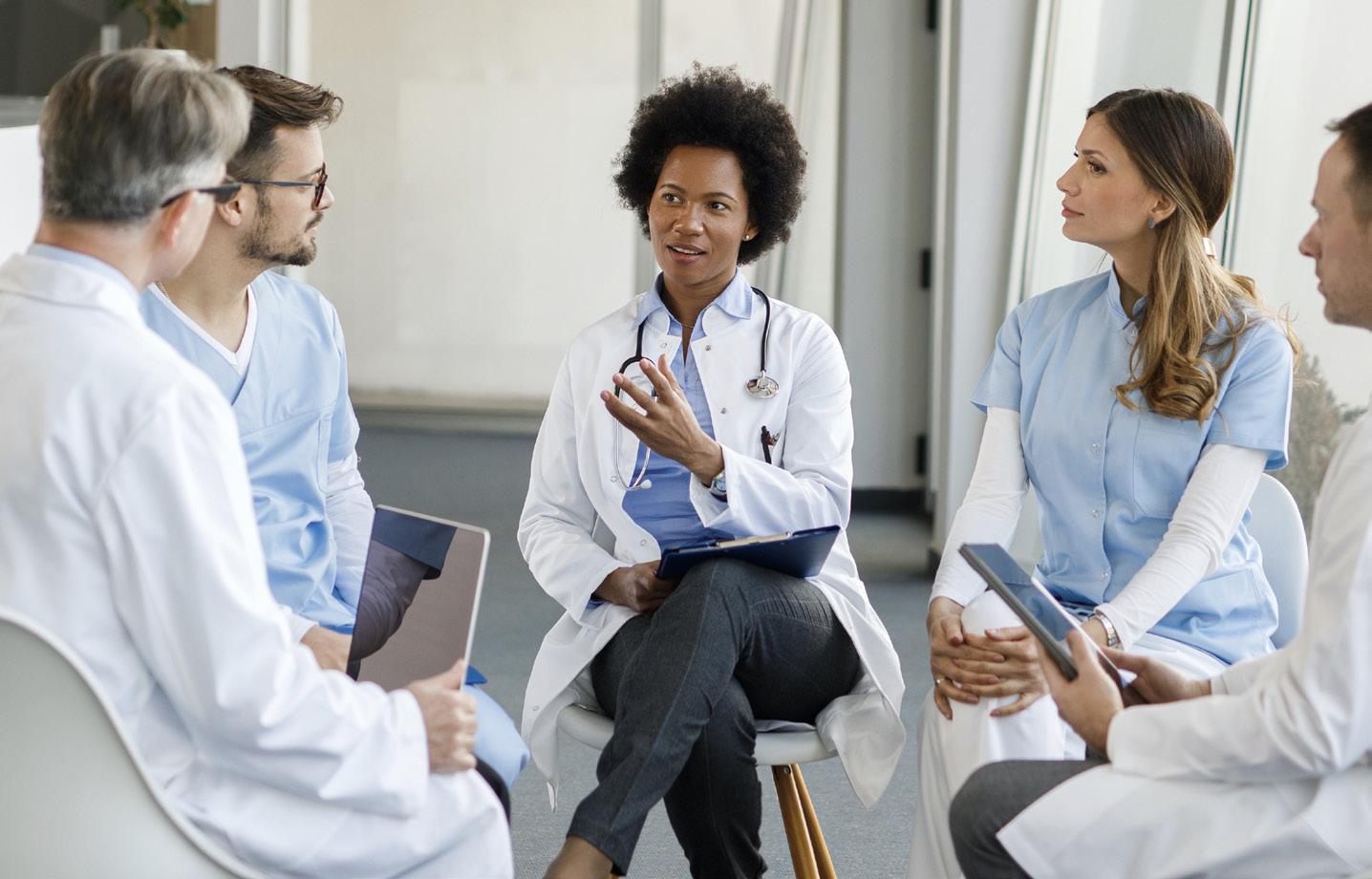
Dr. Yiadom is an associate professor of emergency medicine at Stanford University and director of the Emergency Care Health Services Research Data Coordinating Center.
Dr. Govindarajan is an associate professor and associate vice chair of emergency medicine at Stanford University.
A Perspective on the Complexity of Race in Medicine

By Vanna Albert, MD
"Are you my doctor?" Patients often pose this question after I've introduced myself as their emergency medicine physician. As a Black female physician, this question is commonplace on any given shift. While many might ask this question with incredulity, many minority patients ask with a sense of awe or relief. My background creates a unique opportunity to establish rapport and increase comfort with my minority patients. Building this rapport in a fast-paced environment allows the patient to be more open and honest as they seek care, which allows me to more accurately assess the patient and provide effective treatment. These types of interactions in the healthcare system are few and far between for minority patients who are often misdiagnosed and misunderstood when seeking treatment. Patients’ distrust in “Patients’ distrust in the healthcare system, as well as the lack of underrepresented physicians in healthcare, are some of the many challenges the healthcare system faces when working to provide equitable, quality care for Black, Indigenous, and other patients of color.”
the healthcare system, as well as the lack of underrepresented physicians in healthcare, are some of the many challenges the healthcare system faces when working to provide equitable, quality care for Black, Indigenous, and other patients of color.
To understand the complexities of the healthcare system that result in racial inequities, we must first examine the country's history with race and health. In the 19th Century, James Marion Sims was lauded as the father of modern gynecology due to his work
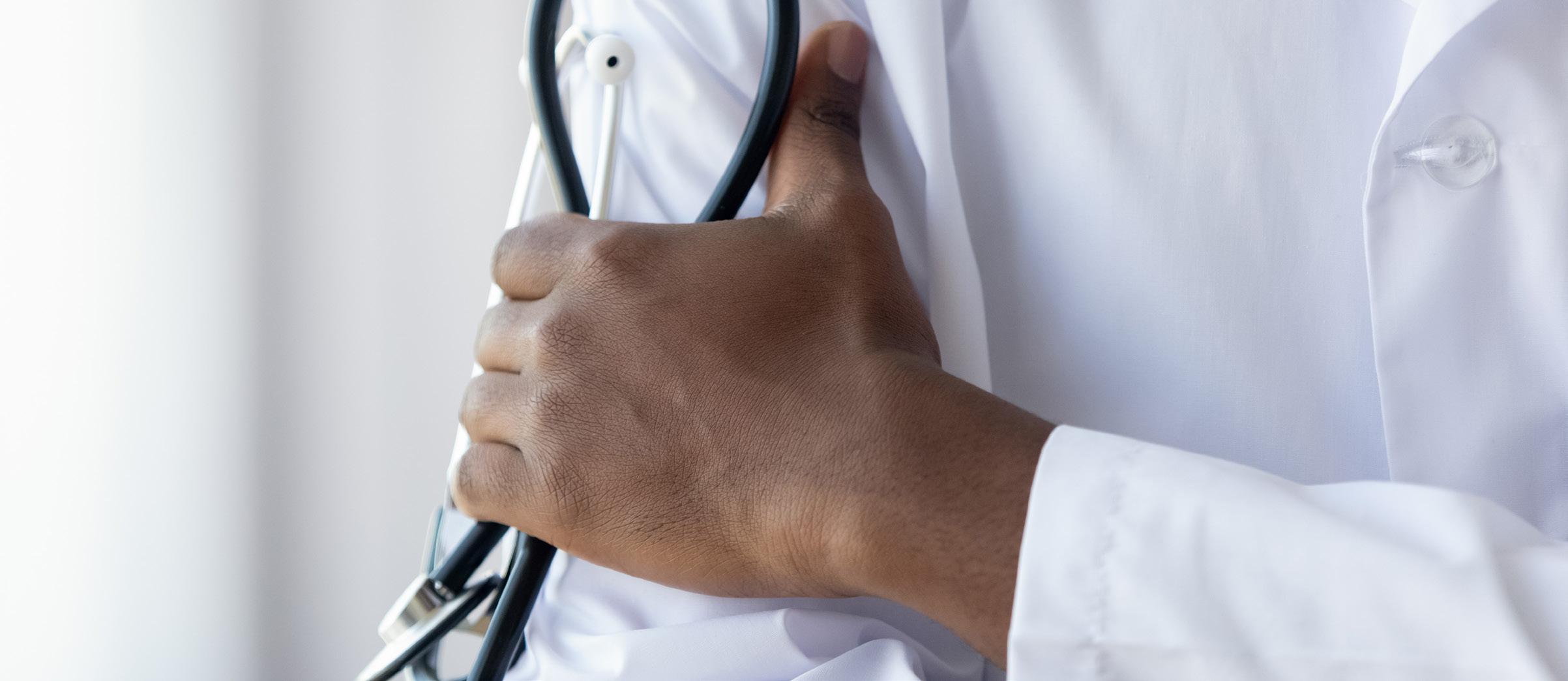
with the vaginal speculum and surgical techniques. Sims' research methods would be seen as unethical, as much of his work was done on female slaves without anesthesia. In the 1930s, we have yet another example of unethical research with the Tuskegee syphilis experiment. Black men were recruited under the pretense of obtaining free medical care for "bad blood." In reality, the treatment for syphilis was intentionally withheld for research. The Tuskegee Experiment and Dr. Sims’ research are just two examples in the history of medicine that demonstrate the inequitable treatment of marginalized members of society.
Although many believe medicine has made great strides in providing ethical and patient-centered care, we continue to see disparities in our emergency departments. Lee et al. found that black patients were less likely than white patients to receive analgesia for acute pain. A survey of medical students found that up to 14 percent of medical students have false beliefs regarding Black patients' ability to sense pain compared to white patients. This type of implicit bias negatively impacts the care of many patients. In addition to bias, structural racism has been shown to adversely affect many patients' health through segregated neighborhoods, lower-quality schools, poor quality housing, and limited access to care.
The question we must answer is: "How can we fix this?"
Taking on structural racism and existent health disparities requires medical providers to look within and acknowledge their own biases. Taking an implicit bias test and educating one’s self about the history of health and race are two steps physicians can take.
Pipeline programs with undergraduate schools and partnerships with community leaders are ways to increase the number of underrepresented students in medicine. Providing additional support to students who are deterred by financial limitations will alleviate the burden of poverty that so often deters students from reaching the field of medicine.
In addition to creating pipeline programs, recruiting a diverse physician workforce is crucial; however, the recruitment of a diverse workforce must be paired with retention strategies. Retaining a diverse workforce requires physicians to examine the current state of our academic departments (Schwarz Analytics): • Does the faculty represent the demographics and representation of the patient populations they serve? • Is the culture in the department one of inclusion? • Is a cultural competency course that challenges implicit biases required as part of incentive compensation? • Do employee engagement scores remain positive when the data is disaggregated by race and ethnicity?
These questions must be answered to create a truly diverse and inclusive workforce and workplace.
Lastly, the complexity of structural racism teaches us that effective change requires a multisystem approach. We must partner with community leaders to dismantle the policies that support an oppressive societal structure and continue to subjugate underserved patients to inadequate care. As physicians, our role is not limited to the treatment of patients in the hospital walls. We must be empowered to advocate for our patients and use our voices to be change agents within our communities.
ABOUT THE AUTHOR Dr. Albert is an assistant chief in the department of emergency medicine at Baystate Medical Center, Springfield, MA.
Addressing Racism Awareness Within Your Physician Group: A Case Study

By Kristiana Kaufmann, MD
Detroit was one of the early hard-hit areas for the COVID-19 pandemic, disproportionately impacting Black communities and Black patients. Detroit also has a long history of racial unrest and continues to demonstrate significant impacts of systemic racism through health, financial, and social inequity. Medical Center Emergency Services is the democratic nonprofit emergency physician group that has practiced at the Detroit Medical Center emergency departments for over 30 years. Our group of more than 70 physicians run the emergency departments at the three urban centers: Detroit Receiving Hospital, Harper University Hospital, and Sinai-Grace Hospital —all of which serve primarily Black communities.
With the recent global anti-racist and social justice movement, our physician group has become proactive in promoting education and reflection around racism and our role as antiracist activists. The first step was in June with a discussion during our monthly board meeting. From this discussion, we arranged a social justice grand rounds for our two residency programs. This five-hour grand rounds focused specifically on historical racism in Detroit, implicit bias, and microaggressions and was a combination of didactics and a specialist-led workshop. A separate workshop has also been offered only for faculty so that residents and faculty alike have a safe space for genuine discussion and reflection. This grand rounds, which is supported by our institutional GME (graduate medical education), will be part of a longitudinal educational series that focuses specifically on social justice and health equity.
In addition to the longitudinal didactic sessions, our group has also found several avenues through which to increase awareness of systemic racism and health inequity within our own working environment. A small team of residents and faculty are working on a quality improvement project in

conjunction with our social justice and health equity curriculum. This project started first with an inventory of the social resources in the emergency department and a survey of our patients to address what resources they would like improved access to. From there we will build a resource guide for our department and start doing a more focused evaluation and improvement project on issues that are specifically identified by our patient population. Finally, our physicians started an anti-racism book club. Our first book was Just Medicine: A Cure for Racial Inequality in American Health Care by Dayna Bowen Matthew. Several faculty members provided chapter reviews and we were able to have a robust discussion and reflection based on this book. We have plans for a quarterly book, movie, or journal club going forward. More importantly, our group has decided to create an implicit bias/ anti-racism policy for our group and incorporate training on the topic into our required annual compliance training.
As the nation reckons with continued structural racism and health inequity impacts, our physician group will continue to work to increase awareness and education around issues of implicit bias and racism here in Detroit. ABOUT THE AUTHOR Dr. Kaufmann is the director of the Global and Urban Health Section and Global and Urban Emergency Medicine Fellowship at Wayne State University and Detroit Medical Center. She is the emergency medicine advisor for the emergency medicine residency in Lao PDR, the faculty advisor for First Aid First, an instructor and senior patroller with the National Ski Patrol, and the codirector of the Global Health Alliance and their academic course Global and Urban Health and Equity.
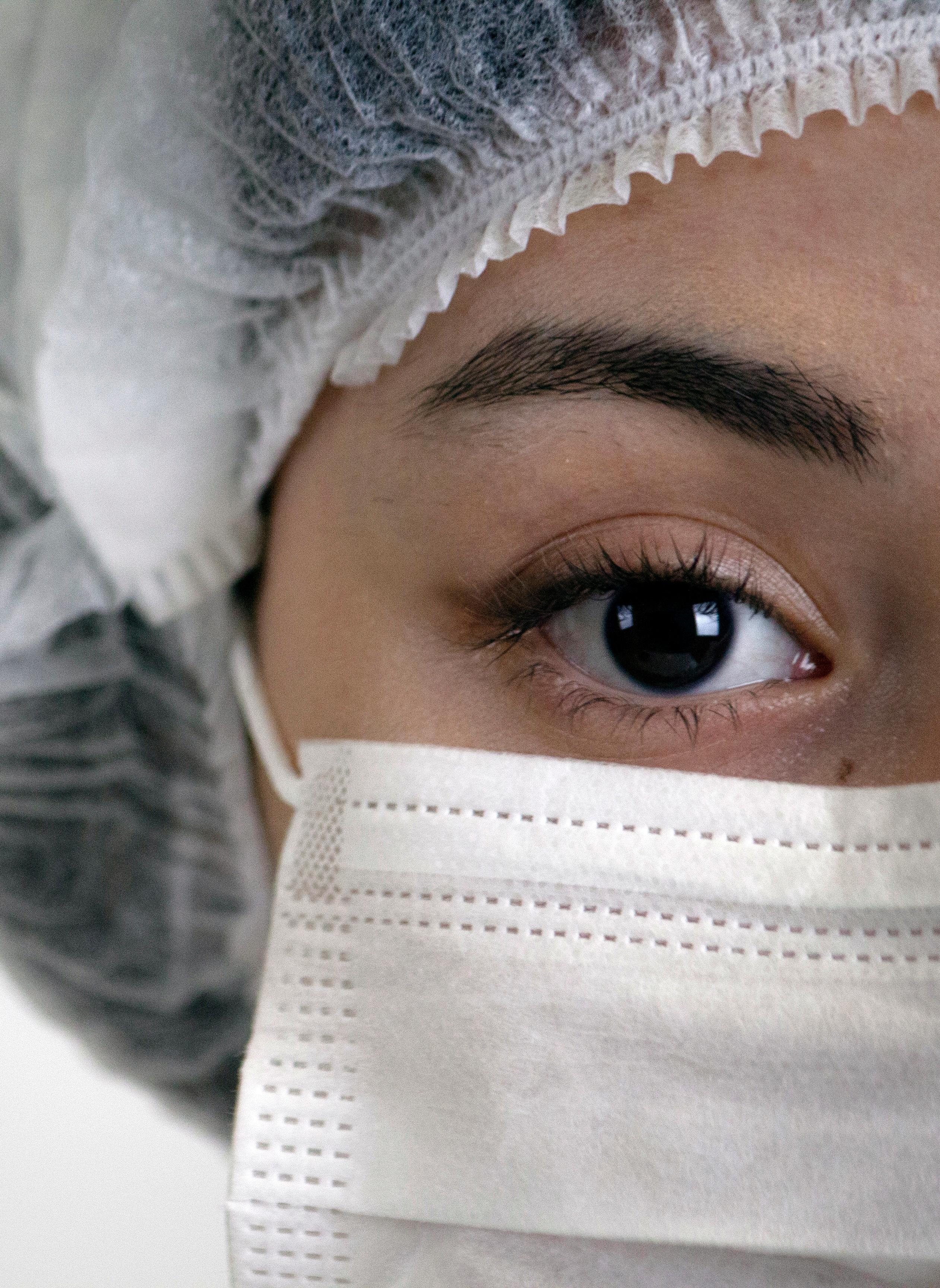

Behind the Masks
By Anish K. Agarwal MD, MPH, MSHP
I hold the mask in my hands. It feels insignificant: light and fragile. We’ve all held masks, countless times… before closing wounds, performing lumbar punctures, or intubating patients.
Now I clutch my mask as if it were about to be blown away by a nonexistent gust of wind. I place it gingerly on my face. With my mask on and temperature screened, I walk into our ED. It is a new world, a different place, transformed seemingly within days. Prior to the pandemic, the ED had been a home away from home for me. The uncertainty of cases and the energy of the team would combine to form a palpable sense of controlled chaos led by people who craved action.
Before, I would stop, look around, and inhale the chaos. I would enjoy soaking it in. This was our ED: busy, crowded and run by people capable of and excited to be caring for anything and everything. Then, early in the pandemic, despite my mask, I could feel myself holding my breath as I crossed the threshold.
My mask takes a journey as I carefully place it into a bag to prolong its use. I hope this bag will protect my mask just as the mask protects me, my family, and my community. I've learned to wipe down the plastic face shield feeling more like a welder than a physician. We all go through these steps as part of a new routine, a routine where the rules have changed and so have we.
The logistics of ED care are, of course, different. Everything is different. We speak to one another through layers of PPE and layers of uncertainty. The once brief, refreshing smirks, smiles and facial expressions are hidden. No shaking hands or patting each other on the backs as we change shifts. Just a brief “how are you?” followed by a long pause and an attempt to read each other’s eyes.
Today, my next patient is a young woman with a cough and fever. Before I walk in I try to imagine how she is feeling and what she is thinking: Anxious. Scared. No one to sit with her or to keep her company. The voices on the TV argue about reopening the economy and schools. We strain to connect and attempt to create a doctor-patient relationship. My attempts at empathetic facial expressions are invisible to her —remnants of before. Her x-ray is labeled with the classic bilateral findings. An “instant classic,” one of us says and for a moment I can feel our shared smiles behind the masks. A bad joke to clear the air.
I walk out, look around, and my eyes meet those of my team. The overhead emergency haste system blares, piercing and breaking our stares. In the seconds between the initial alarm and the dispatcher’s description of the incoming critical patient, I see flashes of excitement in the eyes around me. The thrill has not vanished, our collective passion for running toward the fire, for helping those in need remains. I take a deep, strained breath under my mask and get ready. The roller coaster of emotions continues. I carefully adjust my mask, address a pesky itch underneath, and take a moment to catch my breath before moving forward.
ABOUT THE AUTHOR Dr. Agarwal is an assistant professor in the department of emergency medicine, Perelman School of Medicine, University of Pennsylvania.
COVID, Medical Students, and YOU! The Bottom Line for Emergency Medicine Faculty

By Amy Cutright MD and Julianna Jung MD, on behalf of the SAEM Clerkship Directors in Emergency Medicine academy
The Year Thus Far opportunities for students. Social The shortage of away rotation There is no denying it — 2020 has distancing mandates impeded student opportunities led national leaders in EM been a wild ride in all respects, and integration into care teams, pushing education to take action. CDEM joined the world of medical education is no them out of physician work areas and forces with the Council of Residency exception! When the COVID pandemic moving educational activities online. Directors (CORD) and the Emergency began in March, virtually every medical school suspended in-person instruction, leading to major curricular disruptions for students, particularly those in the clerkship years. In May and June, most schools began bringing students back to the hospital, but the clinical Students’ clinical experiences were further hampered by many schools choosing to ban away rotations, disallowing travel for their own students, and/or refusing to accept students from elsewhere. In emergency medicine (EM), where away rotations are an essential Medicine Residents’ Association (EMRA) to draft a consensus statement outlining expectations for the 2020 application year. The statement, which was ultimately endorsed by ten national EM organizations including SAEM, had five main points: environment was completely different part of the residency application 1. Students are only expected to than it had been before the pandemic. process, this created considerable complete one EM rotation, ideally at With many schools banning student distress for students. The problem was their home institutions. participation in the care of persons compounded for students lacking EM 2. Students are only expected to have under investigation for COVID, students rotations at their home institutions. one Standardized Letter of Evaluation found themselves severely limited in the These students are completely reliant (SLOE), derived from their one EM number and types of patients they could on away rotations for experience in the rotation. see, and in the settings where they were specialty, but many had difficulty finding 3. Non-EM letters should be given permitted to work. Reduced patient places where they could rotate. greater weight than usual by volumes meant even fewer learning residency program leadership.
4. All residency interviews should be conducted virtually. 5. Students should interview at a maximum of 12 programs, going up to 17 programs for students with significant extenuating circumstances.
The goal of the consensus statement is to maximize fairness for students in the residency application process, and to give ALL students a fair chance at pursuing a career in the field. Limiting EM rotations to one per student optimizes rotation availability for students lacking access to EM at their own institutions. Limiting EM SLOESs and increasing emphasis on non-EM letters decreases pressure on students to vie for limited EM rotation spots. Virtual interviews prevent students in areas with higher COVID rates from being disadvantaged in the application process. Limiting student interview numbers prevents highly competitive candidates from over-interviewing, thus maximizing interview availability for more average candidates.
So where are we now? Students have completed rotations and residency applications. Deans’ letters went out on October 21 (three weeks later than usual), and residency programs were able to begin reviewing applications shortly thereafter. The virtual interview season is in full swing, and programs and candidates alike are working hard to put their best (electronic) foot forward to impress one another.
Navigating Virtual Interviews
We are all in for big changes this year with residency recruitment and interviews occurring in a virtual format. Websites, social media, informational sessions, and virtual residency fairs are the primary methods students will use to select programs for their application list. Faculty can help advise students through this stressful process with few gentle reminders. All ACGME accredited programs are excellent residency sites providing quality training. Unvalidated residency rankings and anecdotal information available online through platforms such as Doximity are not reliable. Advise students to review residency program information directly and draw their own impressions. Reassure them that residency programs are rigorously reviewed and are not permitted to operate if there is any question as to the quality of the training they offer.
By necessity, the interview will increase in importance this year for both residency programs and candidates. We can all prepare for and positively represent our programs with a few basic steps. The AAMC has created a robust set of recommendations regarding the new interview process that can be accessed here. Content addressing implicit bias, creating and scoring interview questions, and setting up interview space are particularly helpful. While virtual interaction has become commonplace for many of us during the pandemic, it is wise to dedicate time prior to interviews to familiarize yourself with your program’s interview platform. Patience with the inevitable technological challenges and connectivity issues that will arise for all of us will be required.
Limitations on interview numbers are certain to be a source of anxiety for students this year. The stress of the application process leads many excellent applicants to perceive themselves as marginal, and no amount of reassurance can fully convince them otherwise. This insecurity leads to over-application, which in turn leads to over-interviewing. The number of programs to which EMbound students apply has exploded in recent years, and the pandemic is likely to exacerbate this. And with interviews going virtual, it will be tempting for students to accept every interview offer they receive. As mentioned above, there is real harm in this practice, as it deprives many other qualified candidates of interview opportunities. Data from the National Residency Match Program show that 96 percent of U.S. medical students will match in EM with 12 interviews. Remind students of this fact and reassure them that more interviews do not lead to a substantially better chance of matching, except in extreme cases. Ultimately residencies need candidates to match, and students need residencies to match into — a worthwhile fact on which to reflect when the inevitable challenges of the upcoming interview season arise.
ABOUT THE AUTHORS Dr. Cutright is an assistant professor of emergency medicine at the University of Nebraska College of Medicine. She serves as the EM clerkship director and oversees the core clerkship year for the College of Medicine, among other roles. She currently serves as the secretary of CDEM.
Dr. Jung is an associate professor of emergency medicine at the Johns Hopkins University School of Medicine, where she directs the core clerkship in EM and serves as associate director for the simulation center, among other roles. Dr. Jung is the current president of CDEM.
About CDEM
Clerkship Directors in Emergency Medicine (CDEM) represents the interests of undergraduate medical educators in emergency medicine. It serves as a unified voice for EM clerkship directors and medical student educators and provides a forum for them to communicate, share ideas, and generate solutions to common problems. For more information, visit the CDEM webpage. As an SAEM member, you may now join as many academies* and interest groups as you choose. Just log into your member profile and click on the "Update (+/-) Academies and Interest Groups" button.
Climate Change and Extreme Heat Events: A Hot Topic in Emergency Medicine

By Catharina Giudice MD, Caitlin Rublee MD, MPH, and Edward J. Otten MD on behalf of the SAEM Climate Change and Health Interest Group
According to the National Aeronautics and Space Administration (NASA) and National Oceanic and Atmospheric Administration (NOAA), 2019 was the it is important to acknowledge the significant disparity in the number of heat-related deaths among some racial and ethnic minority groups related DRUGS WHICH MAY PREDISPOSE TO HEAT-RELATED ILLNESSES Alcohol Calcium channel blockers second hottest year, making the last to a complex set of factors: access Alpha adrenergics Clopidogrel decade officially the warmest ever to air-conditioning, employment, Amphetamines Cocaine recorded. As global temperatures socioeconomic activities, prevalence Anticholinergics Diuretics continue to rise in an era of climate of chronic diseases and medications, Antihistamines Laxatives change, the life-threatening health access to medical care, and urban Antipsychotics Neuroleptics impacts of extreme heat will be an location which is subjected to heat- Benzodiazepines Thyroid agonists increasingly important reality for trapping and heat island effects. Beta blockers Tricyclic antidepressants prehospital, emergency medicine, and critical care practitioners. In 2003, the European Heat Wave brought the lethality of excessive heat exposure to the world’s attention. That summer, Europe saw a death toll that exceeded 70,000, some of which were directly attributed to heat-related illnesses while others were heat-related exacerbations of cardiovascular, respiratory, and all-cause mortality. As such, we review heat-related illnesses and management with emphasis on recognition and cooling. Heat-related illnesses fall under a group of conditions that range from benign processes, such as muscle cramps, to life-threatening emergencies, such as heatstroke. Time-to-intervention is key to reducing morbidity and mortality; therefore, a high index-ofsuspicion and prompt recognition and of extremities and abdominal wall. Cramping is due to sodium depletion and can be exacerbated by poor acclimatization and diuretic usage. Treatment consists of passive stretching, oral rehydration and salt repletion. Heat Syncope Heat syncope is a transient loss of consciousness followed by a rapid return to baseline. Peripheral
In the United States (U.S.), an average initiation of cooling takes priority in vasodilation and low intravascular of 618 people die every year due to caring for these patients. volume from dehydration lead to a excessive heat exposure, although most experts agree this is an underestimation given the challenges to diagnosis and reporting. While all people are at-risk, Heat Cramps Heat cramps are painful involuntary contractions of skeletal muscles brief orthostatic event that resolves after patient falls or reaches a supine position. Lack of acclimatization, profuse sweating, alcohol, and cardiac
DIFFERENTIAL DIAGNOSIS OF HEATSTROKE Infection
Meningitis/Encephalitis Sepsis Malaria Typhoid Tetanus
Endocrine
Thyroid storm Hypoglycemia Hyponatremia Pheochromocytoma Diabetic ketoacidosis
Neurologic
Hypothalamic stroke Cerebral vascular accident Status epilepticus
Oncologic
Lymphoma Leukemia
Toxicology
Anticholinergic poisoning Sympathomimetic poisoning Salicylate poisoning Serotonin syndrome Malignant hyperthermia Neuroleptic malignant syndrome Sedative/Alcohol/Benzodiazepine withdrawal
insufficiency can predispose to heat syncope. Treatment involves removal from the environment, repletion of water deficits, and assessment for secondary trauma caused by a fall from standing.
Heat exhaustion
Heat exhaustion describes a spectrum of symptoms attributed to water and sodium depletion when exposed to excessive heat. Patients often present with elevated core temperature between 38°C (100.4°F) and 40°C (104°F), profuse sweating, and can have an array of symptoms including malaise, fatigue, nausea, vomiting, chills, dizziness, headache, and weakness. This syndrome can be differentiated from heatstroke by the lack of neurologic impairment (encephalopathy, seizures, coma) and the prompt recovery following removal of heat exposure and repletion of water or sodium deficit. Oral rehydration is often sufficient and preferred. If not recognized or treated promptly, heat exhaustion can progress to a life-threatening form of heat illness known as heatstroke.
Heatstroke
Heatstroke is central nervous system dysfunction plus a core temperature ≥40°C. Classic heatstroke primarily affects those exposed to heat with extremes of age and/or chronic medical conditions, as occurs in heat waves or with vehicular heatstroke. Exertional heatstroke frequently occurs in healthy, young adults – athletes, military trainees, construction workers or other manual laborers. End-organ damage and overall mortality from heatstroke is related to the time cell lines remain in a hyperthermic state; thus, lowering the body temperature as quickly as possible should be the primary objective, in addition to supporting basic airway, breathing, and circulation. This principle should be kept in mind from the very first medical encounter with the patient: if heatstroke is suspected by prehospital personnel, initiation of treatment should begin promptly in the field, even if a core body temperature cannot be obtained first.
A systematic review by Bouchama and colleagues (2007) revealed no prevailing cooling method for heatstroke. Cold water immersion is considered an effective and safe method of cooling, particularly for exertional heatstroke. In classic heatstroke, mental status and mechanical ventilation may preclude cold water immersion in favor of misting and fans or other evaporative treatments; intravascular cooling catheters have also been successfully used.
A core temperature of 38–39°C has been held as a safe endpoint for cooling. Currently, there is no evidence to support the usage of dantrolene or antipyretics as adjuvant treatments. In addition, antipyretics such as aspirin and acetaminophen can exacerbate heatstroke complications such as coagulopathy and liver injury.
A final controversy in the management of heatstroke is the amount and type of fluid resuscitation. Hypotension and the need for vasoactive agents have been associated with increased mortality rates and worse neurologic outcomes. The shock profile of heatstroke shares similarities to that of septic shock, and a combination of fluid resuscitation and vasoactive agents have been supported to achieve adequate tissue perfusion. Acute congestive heart failure and pulmonary edema are documented concerns with aggressive fluid resuscitation. In the emergency department (ED), ultrasound usage may be a beneficial tool to quickly assess volume status and guide resuscitation.
As climate change continues to change the pattern of disease, emergency physicians will have to continuously learn and adapt their practice based on the local community impact. As we have seen throughout history, heat waves are powerful silent killers. Training emergency personnel on prompt recognition and cooling and preparing emergency departments for higher overall volumes is critical to improving morbidity and mortality associated with extreme heat events.
ABOUT THE AUTHORS
Dr. Giudice is a second-year emergency medicine resident at Los Angeles County, University of Southern California, CA.
Dr. Rublee is an assistant professor of emergency medicine at the Medical College of Wisconsin. She is the current chair of the SAEM Climate Change and Health Interest Group.
Dr. Otten is a professor of emergency medicine and pediatrics and director for the division of toxicology at the University of Cincinnati. He is past president of the Wilderness Medical Society, Charter Member Environmental Council.
The Climate-Smart, EnvironmentallyResponsible ED: Helping Patients by Reducing Healthcare Pollution

By Gayle Kouklis MD and Jonathan E. Slutzman MD on behalf of the SAEM Climate Change and Health Interest Group
Climate change is an ever-looming supply we use has an environmental associated with waste disposal. While public health disaster, touted by The and subsequent health impact on our individual emergency physicians arguably Lancet as the number one public health community. We need different approaches have the biggest impacts on numbers two threat of the 21st Century. The effects to reduce each of these sources, with and three, we can nonetheless improve in of climate change on human health are emergency physicians playing key roles in all three of these areas. broad and deep, affecting nearly all body mitigation strategies. In clinical decision making, we are systems. Unfortunately, the impacts of climate change are greatest on the most vulnerable — the young, elderly, pregnant, mentally ill, and those of low socioeconomic status (in other words, the people we see most often in our emergency departments). Unfortunately, our care in the emergency department contributes to the problem. In the United States, healthcare is responsible for nearly 10 percent of all greenhouse gas emissions. Of the different sources of climate-changing pollution from health care, 21 percent are Scope 1 (direct combustion and greenhouse gas releases, like anesthetics), 15 percent are Scope 2 (indirect emissions from purchased energy), and 64 percent Finding the time Perhaps you’re thinking, “I already have a full plate caring and advocating for my patients, keeping up with the latest research, and getting through residency… How can I fit this in?” Residents should consider including environmental issues in a possible quality improvement or research project to fulfill their residency requirements. If you are interested in research, include environmental impacts as a lens for studying whatever clinical question interests you. Start by tackling a small piece, with support from your faculty. What you can do to reduce the climate footprint of your often faced with diagnostic or therapeutic questions that have multiple answers: Do I need to give antibiotics after an I&D? Does that person need a CT of their belly for these symptoms? The Choosing Wisely campaign has various recommendations for these types of clinical questions. Each recommendation is aimed at decreasing resource utilization while practicing standard care and is backed by one of our very own specialty societies. There are recommendations from nearly 100 medical bodies based on best practices, which can be incorporated into your own practices to help guide interactions with consultants. Every MRI or CT scan avoided represents a little less pollution emitted and harm done to our are Scope 3 (supply chain, purchased clinical care communities. materials, food, business travel, patient and staff transportation). Every clinical choice we make, diagnostic study Think of pollution as coming from three sources: 1.) supplies and other things coming to your hospital; 2.) activities Consider the tools you use every day we order, procedure we perform, and involved in patient care; and 3) emissions Every scalpel, angiocath, and bag of
vancopime has a story to tell and a carbon footprint trailing behind it. Environmental life cycle assessment is a tool that can give insight into the cradle-to-grave environmental impact of each instrument or pharmaceutical, including raw material acquisition, production, transportation, use, reprocessing, and ultimate disposal. Take the humble laryngoscope, an emergency physician’s best friend. A study done at Yale looked at both the life cycle environmental impacts and financial costs for reusable and single use laryngoscopes. It found that using both reusable handles and reusable blades had the lowest environmental impact and together would save $675,000–$895,000 in one year. Similarly, the environmental impacts of reusable vaginal specula have been shown to be less than that of their disposable counterparts. In fact, nearly every life cycle assessment comparing a single-use disposable device to its reusable counterpart has shown better environmental impacts associated with reusable devices. The studies that included financial costs also found they were less expensive. And who doesn’t prefer using durable instruments over flimsy disposables? Health Care Without Harm and Practice Greenhealth have guides on green purchasing that can direct conversations with suppliers to source items with the lowest environmental impact. Learning the story of each option available allows for informed purchases that can lower the impact of providing care for patients and decrease costs to the hospital without any change in day-to-day practice.
We need to address our own mess
Healthcare generates more landfill waste than almost any other industry, second only to food service at over 7,000 tons per day. The emergency department is a prime source of waste. A waste audit at one of our hospitals showed that we produced 4.4 pounds of waste per patient encounter, which translates to 3,000 kg CO2e emitted daily from one ED just from waste disposal activities alone (not including upstream pollution). Extrapolating to the nearly 150 million annual ED visits in the U.S., that’s 330,000 tons of trash just from EDs each year. Recycling may help a little, with opportunities to divert up to 38 percent of ED waste to recycling; however, recycling doesn’t actually have as big an environmental benefit as many people assume. In an operating room setting, maximal recycling would only improve the environmental footprint of an operation by one percent. Reducing waste through optimized procurement, increasing use of reusable and durable equipment, and reducing packaging, have a much bigger environmental impact. That said, recycling is visible and can motivate staff to think about other ways to improve environmental performance.
What about those red bags?
What actually needs to go in the red bag? What does it even mean when something goes into a red bag? Red bags are for regulated medical waste (RMW), which in the ED includes blood and blood products (including draining, liquid state, and materials saturated or dripping with blood); pathological waste (including human anatomical parts and specimens of body fluids, excluding urine, nasal secretions, sweat, sputum, vomit, or fecal matter that don’t contain visible blood or confirmed diagnosis of infectious disease); and sharps (including medical items that can cause punctures or cuts). RMW is almost exclusively processed by autoclave sterilization followed by landfill or incineration, costing 5-10 times more than general solid waste to dispose and generating lots more pollutants (including GHG). Minimizing RMW, ensuring that only items that need to be disposed that way go into red bags and sharps containers, should be key to any ED’s environmental stewardship strategy.
Even single-use disposable devices can be reprocessed and made to work “good as new.” Reprocessing is an FDA-regulated service, which can reduce environmental emissions and provide a cost savings to hospitals. Physicians are frequently surprised to learn that 100 percent of all reprocessed items are inspected for quality — a requirement that doesn’t apply to new devices from manufacturers. Emergency physicians can work with their materials management teams to seek reprocessed instruments when available and can show colleagues in other specialties that reprocessed devices can function just as well as new items.
Instruments and devices
How often do you open a central line or other kit and find parts you don’t need? Those parts then go directly to the trash, generating no value for anyone. Or, you find not enough tools for a procedure and then need to open extra items. Examining these premade kits, learning what’s useful and what’s commonly thrown away, and reworking the contents of kits may decrease both overall waste and cost.
These ideas just scratch the surface of moving towards a greener healthcare system and don’t even fully address the ways emergency physicians can leverage their breadth of knowledge and interactions with all facets of the hospital to take leaderships roles in hospital and health system environmental stewardship efforts. There is much more to be done, including improvements in energy use, heating and cooling, food supplies, EMS, and other arenas. It is imperative that we communicate to our colleagues and leaders the urgency of the changing climate and its current and future detriments to our patients’ health. Just as with each patient that walks through our doors, this will require a team effort and aligned goals from many people with different priorities. We are here to always redirect towards what is best for our patients.
ABOUT THE AUTHORS
Dr. Kouklis is an emergency medicine resident at UCSF Fresno @GayleKouklis.
Dr. Slutzman is an instructor in emergency medicine at Massachusetts General Hospital/ Harvard Medical School.

Mentorship: The Secret to Success for Underrepresented in Medicine Faculty
By Ynhi Thomas, MD, MPH, MSc, Adedoyin Adesina, MD, Richina Bicette, MD, and Dick Kuo, MD on behalf of the SAEM Academy for Diversity and Inclusion in Emergency Medicine
Multiple studies have reported that underrepresented in medicine (URiM) faculty receive less mentoring than their non-URiM colleagues. Some of the challenges URiM faculty face include inadvertent and advertent racism, marginalization, and lack of promotion. A study based on the National Faculty Survey from 24 United States medical schools showed that URiM faculty had fewer publications and were less likely to be retained in academic careers. A review of the National Institutes of Health data from 2000 to 2006 showed that Black scientists were 10 percent less likely than their white colleagues to receive R01 grants. The variability in access to mentorship has been attributed to the disparities faced by URiM faculty, as highlighted by the experiences below.
Reflections From an Early Career Faculty Ynhi Thomas, MD, MPH, MSc
@YnhiThomas Administrative Fellow Assistant Professor of EM Baylor College of Medicine “I grew up in Mississippi and went to medical school in Alabama. It wasn’t unusual to be one of the few minorities among my colleagues. Diversity wasn’t commonplace, and I remember my surprise when one of my medical school classmates told me that she hadn’t met someone of Asian descent until college. "Despite the lack of diversity, I still had incredibly supportive mentors, though they were often white males. I often longed for someone from a similar background to answer questions I felt uncomfortable asking, specifically about how to attain promotions while handling implicit bias. I felt like I had to work twice as hard to disprove the stereotypes against me, especially as a female and mother. "I’m fortunate to now be faculty in an incredibly diverse department, and I’m receiving mentorship from people who reflect my values and background. More could still be done in terms of formalized mentorship, and I wonder how many unproductive years I and others have faced as we climbed a professional ladder that wasn’t designed for those who don’t fit the traditional mold of success.”
Reflections From a Faculty in Medical Education Adedoyin Adesina, MD
Assistant Professor of EM Associate Clerkship Director Baylor College of Medicine “One day, a URiM friend reached out for advice. As part of her medical school requirement, she needed to find a research project. I encouraged her to start by e-mailing some of her professors, but she confessed that she was used to maintaining a lowkey profile. She was intimidated by the thought of approaching her professors and didn't know where to begin.
"As I listened, I reflected on my experiences as a medical student. I could relate to her insecurities. As a first-generation physician and URiM, there is a hidden curriculum. Failure to understand and assimilate to expectations can lead to depersonalization, isolation, and stagnation. This pattern may go unnoticed, resulting in dissatisfaction in an already marginalized population. When it comes to being URiM, part of the 'leak' in the academic pipeline occurs because we never received guidance on integrating and engaging in this complex social system and are often left to figure things out on our own. Things can be challenging for first-generation physicians who don’t have family members to guide and mentor them; many haven’t been offered the same opportunities as their peers, whether research, clinical, or networking opportunities. Efforts directed toward augmenting cultural and social capital can positively impact their academic and career prospects. This support can and should come in the form of mentorship and sponsorship.”
Reflections from a Faculty in Administration and Operations Richina Bicette, MD
@DrRichiMD Assistant Professor of EM Baylor College of Medicine Medical Director Baylor St. Luke's Healthcare System “I will never forget the day I first met my undergraduate pre-med advisor. She scrutinized my file and ‘advised,’ that I wasn’t a good candidate for medical school and shouldn’t apply. She was a middle-aged white woman—a stark contrast to me, a young Black woman and first-generation U.S. citizen. A few years later, not only did I earn my M.D. from a top tier medical school, but I also received an academic scholarship. Where was the disconnect? How could someone who was told that she wasn’t good enough go on to reach such success? "Unfortunately, my story isn’t unique, and brings to light common themes many URiMs face. The true issue is that there needs to be more access to mentorship for URiMs. At the start of medical school, a senior faculty member decided to engage
with me, and thus began the first real example I had of what a mentor/mentee relationship should be. "I can unequivocally say that my career would have taken a different course had I not received the mentorship that was bestowed upon me later on in life. It is imperative as faculty that we continue to propagate the need for access to mentorship for URiMs while also promoting diversity and inclusion in medicine as a whole.”
Reflections From a Faculty in Senior Leadership Dick Kuo, MD
Professor and Chairman Henry J.N. Taub Department of Emergency Medicine Baylor College of Medicine “I have been department chair for three years now. We recently, even before the most recent highlights on systemic racism, added diversity as one of our core values. I believe this applies to all of our institutions. It may not be overt, but it is subtle and omnipresent. With this understanding, diversity must be intentionally created and built within a department. There is a need to recognize unconscious bias and the creation of pathways to combat evaluation bias to ensure equal opportunity for advancement of all faculty. "When I began my career in academic medicine more than 25 years ago, faculty development was not a widespread concept. Speaking with many colleagues, it seems that the “sink or swim” model was commonplace. The Council of Residency Directors has begun to bridge this gap with their ‘Navigating the Academic Waters’ track, which focuses on faculty development. "Many junior faculty find it difficult to engage a system that is unfamiliar. Likewise, engaging junior faculty in a large department with meaningful mentorship remains a challenge for any department, given the lack of senior mentorship. Systemic biases must be combated with systematic solutions such as the creation of programs to formally address the mentoring needs of all faculty.”
A Call to Action
Academic programs with formal mentorship for URiM faculty have reported promising results. The University of California, San Diego implemented a faculty development program for URiM faculty that increased the retention rate in the medical school from 58 percent to 80 percent and retention in academic medicine from 75 percent to 90 percent. Another program for URiM faculty and students at Creighton University and Wake Forest found similar results. The retention rate for the first year of the Creighton mentoring program was 58 percent compared to 20 percent prior to implementation, with mentees reporting improved career satisfaction and effectiveness in meeting career goals. The New Century Scholars program within the Academic Pediatric Association encouraged 63 percent of the URiM pediatric residents to enter academic careers. Mentorship is critical to career development for URiM faculty within academic medicine, and we should formalize and decrease barriers to establishing mentor-mentee relationships. Evaluation tools should be created to assess the effectiveness of URiM mentorship program. It may be helpful to develop national guidelines for program evaluation that allow comparisons of programs. It may also be beneficial to create leadership positions dedicated to mentoring URiM faculty. There is a need to have more URiM representation within the top ranks of academic medicine. URiM faculty may be less likely to reach out for guidance if those leading them do not come from similar backgrounds, hindering academic advancement. Successful retention of underrepresented groups requires an institutional commitment to changing the academic culture and deliberative programming to support the challenges met by URiM faculty. We are placing a call to action in establishing pragmatic programs that will strengthen and enrich our institutions.
About ADIEM
The Academy for Diversity & Inclusion in Emergency Medicine (ADIEM) works towards the realization of our common goals of diversifying the physician workforce at all levels, eliminating disparities in healthcare and outcomes, and insuring that all emergency physicians are delivering culturally competent care. Joining ADIEM is free! Just log into your member profile. Click “My Account” in the upper right navigation bar. Click the “Update (+/-) Academies and Interest Groups” button on the left side. Select the box next to the academy you wish to join. Click “save.”
own mental and emotional health with regards to secondary traumatic stress we may incur on a daily basis. SGEM: DID YOU KNOW?
ABOUT THE AUTHORS
Dr. Dany Accilien is a PGY2 and rising chief resident for the Sex and Gender Differences in 2020-21 academic year at the University of Chicago. Traumatic Brain Injury
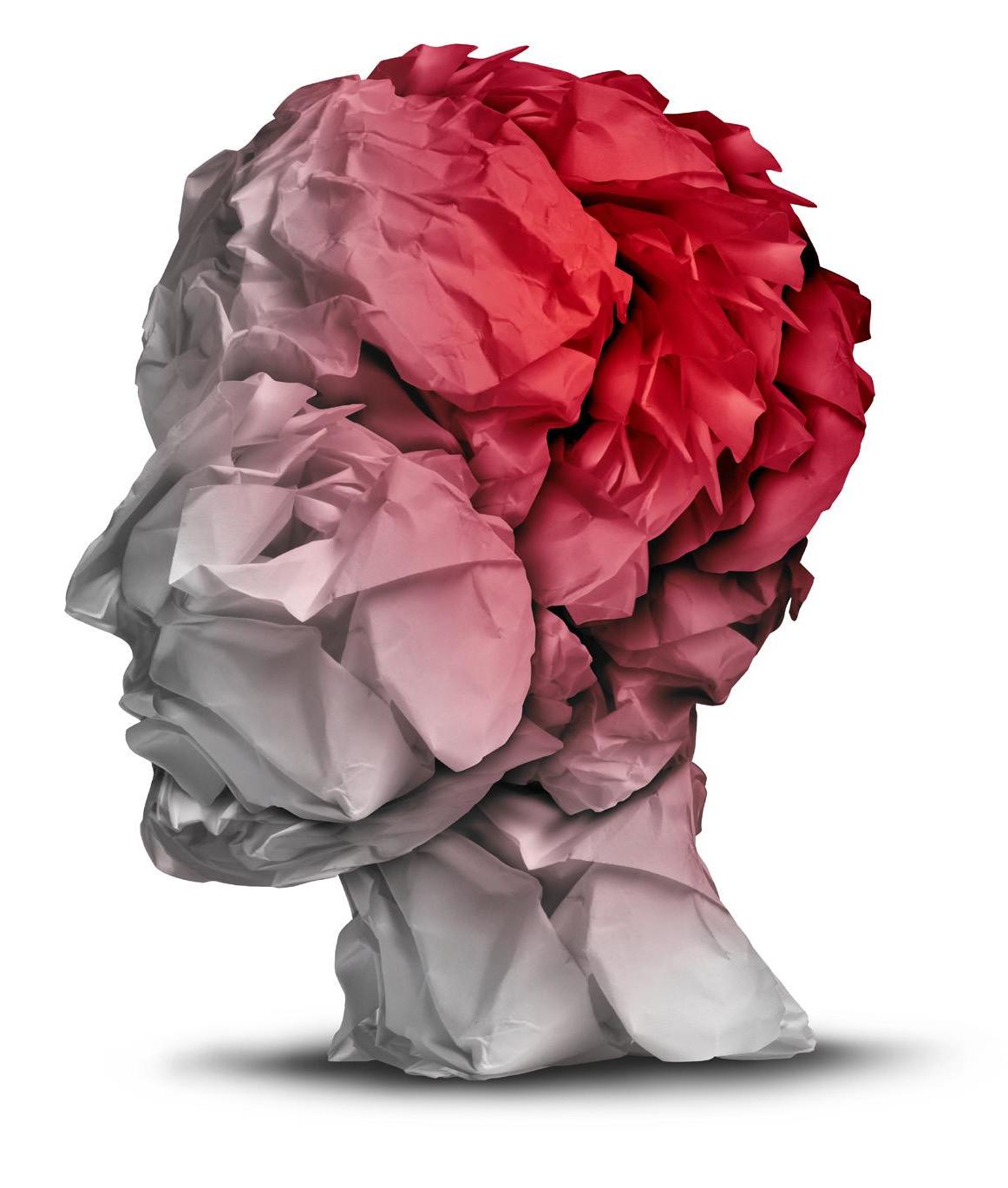
By Katherine Ku, MS4, Touro University California and Angela Jarman MD, MPH, UC Davis Emergency Medicine on behalf of the
Dr. Arthur Pope is a PGY2 and Sex and Gender in Emergency Medicine Interest Group rising chief resident for the 2020-21 academic year at the University of Chicago. He While the incidence of traumatic brain injury (TBI) is higher in men, women who sustain TBI are more likely plans to pursue a fellowship in to suffer long-term sequelae such as memory loss medical education. and difficulty concentrating. This may be related to underappreciated biological vulnerabilities to brain injury as well as gender-based differences in reporting and exposure. As TBI is one of the most common injuries leading to mortality in trauma patients, understanding how sex and gender contribute to incidence and mechanisms of injury in TBI has important implications for emergency physicians.
Estrogen has been thought to be neuroprotective in cerebrovascular accident. However, women tend to have worse outcomes and more complications when it comes to TBI. Some studies have shown that estrogen can exacerbate post-injury neurodegeneration and tissue loss in females. One recent study also found that men and women produce different inflammatory markers in the setting of concussion. Other studies have shown that women take longer to recover from TBI and are more likely to develop long-term sequelae such as working memory impairments, dizziness, fatigue, headache, anxiety, and depression. Women were also reported to be twice as likely to develop PTSD following TBI compared to men. Anatomical differences have also been suggested to contribute to increased susceptibility to concussion in women. Because the musculature of the neck is comparatively smaller in females as opposed to males, the head moves with more angular acceleration in females when impacted by the same force. injury though it is a significant cause of TBI in women. This highlights a potential gap in how we model TBI and
Gender-differences must also be considered when develop treatment guidelines. considering how best to care for TBI patients. A recent report from Pediatrics journal found girls to be at the same risk as boys for sport-related concussion, with concussion rates higher for girls in every sport. Girls tend to take longer to report symptoms of TBI, which may contribute to the longer recovery times. Additionally, intimate partner violence (IPV) as the mechanism of TBI hasn't been as thoroughly studied as sport-related head There are clearly sex and gender factors at play when it comes to how TBI manifests in our patients. But preclinical and clinical studies looking at how sex differences impact trauma have had mixed results, highlighting a complex interplay among hormones, anatomical differences, and gender that is still not fully understood.
SGEM "Did You Know?" is a recurring SAEM Pulse submission designed to represent concise facts that demonstrate how patient sex and gender effect emergency care. We welcome submissions. Please send contributions to the coeditors Lauren Walter and Alyson J. McGregor at sgem@lifespan.org.










